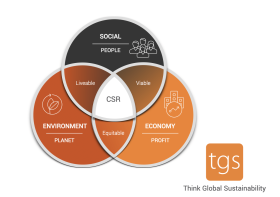Data Visualization for Marketing Reports

In the digital age, the abundance of data has become both a blessing and a challenge for marketers. With an ever-increasing amount of information at their disposal, marketers need effective tools to make sense of the data and derive actionable insights. This is where data visualization comes into play.
What is Data Visualization?
Data visualization is the graphical representation of data in a visually compelling and easy-to-understand manner. It transforms numbers, statistics, and complex information into visual elements like charts, graphs, or maps that tell a story and convey valuable insights.
The Power of Data Visualization in Marketing
Data visualization is a game-changer for the marketing industry, enabling marketers to communicate complex data more efficiently and engagingly. Here’s why data visualization is crucial for marketing reports:
1. Simplifying Complex Data
Marketing reports often contain a plethora of data from various sources, making it challenging to extract meaningful insights. Data visualization simplifies this complexity by presenting information in a visually digestible format. Instead of overwhelming your audience with spreadsheets and endless rows of numbers, you can present them with eye-catching charts that convey the same information with greater clarity.
2. Enhancing Readability and Understanding
Humans are visual creatures, and our brains process visual information faster than text. By using data visualization, marketers can convey their findings more effectively, allowing stakeholders to quickly grasp the main points. Whether you’re presenting quarterly sales figures or analyzing customer behavior patterns, presenting data visually increases the chances of information retention and understanding.
3. Highlighting Trends and Patterns
Data visualization provides marketers with a powerful tool to identify trends, patterns, and correlations within their data. Through well-designed charts and graphs, marketers can unveil hidden insights that may go unnoticed in raw data. Identifying trends allows marketers to optimize their strategies, make data-driven decisions, and seize new opportunities.
4. Facilitating Decision-making
When faced with numerous marketing options, decision-making can be daunting. Data visualization empowers marketers to evaluate different campaigns or strategies more effectively. With visual representations of data, marketers can compare and contrast the performance of various tactics, channels, or target audiences, enabling informed decision-making that can lead to improved marketing performance.
5. Engaging Stakeholders
If a marketing report is nothing more than a wall of text and numbers, it becomes dry and unappealing to stakeholders. Visualizing data makes your reports more engaging and captivating. Vibrant charts and graphs capture attention and keep stakeholders interested throughout the presentation. When stakeholders are engaged, they are more likely to absorb the information, contribute to discussions, and support the proposed marketing initiatives.
Best Practices for Data Visualization in Marketing
To effectively utilize data visualization in marketing reports, consider the following best practices:
1. Understand Your Audience
Before designing your visualizations, understand who your audience is and what they expect from the report. Tailor your visualizations to the knowledge and preferences of your stakeholders. For instance, if your audience consists of senior executives, present high-level summaries and concise visuals. If your audience is more data-savvy, feel free to delve into more detailed analyses.
2. Choose the Right Visualizations
Select visualizations that are best suited to represent the specific data you want to convey. Line charts are great for showing trends over time, while bar and pie charts work well for comparing different categories. Use scatter plots to identify correlations and maps to highlight geographical data. Choose visualizations that enhance the story you’re trying to tell.
3. Keep it Simple and Clean
Avoid cluttering your visualizations with excessive colors, unnecessary data points, or complicated designs. Keep your visualizations clean and minimalistic, focusing on the key takeaways. Use consistent color schemes and intuitive labeling to enhance comprehensibility. Remember, simplicity is key to effectively communicate your message.
4. Use Interactive Elements
Make your visualizations more engaging by including interactive elements. Allow users to explore the data further by hovering over different data points or applying filters. Interactive visualizations enable stakeholders to interact with the data, fostering a deeper understanding and curiosity.
5. Tell a Story with Data
Don’t just present data; tell a compelling story. Frame your insights within a narrative that keeps your audience interested and invests them emotionally. Start with a clear objective, guide stakeholders through the data, present key findings, and conclude with actionable takeaways. A well-constructed story will make your marketing reports more memorable and impactful.
In Conclusion
Data visualization is an indispensable tool in the marketer’s arsenal. By simplifying complex data, enhancing readability, highlighting patterns, facilitating decision-making, and engaging stakeholders, data visualization empowers marketers to unlock the full potential of their data. By following best practices and leveraging the power of visualizations, marketers can transform their reports into compelling stories that drive marketing success.


